Coves cut by plane work
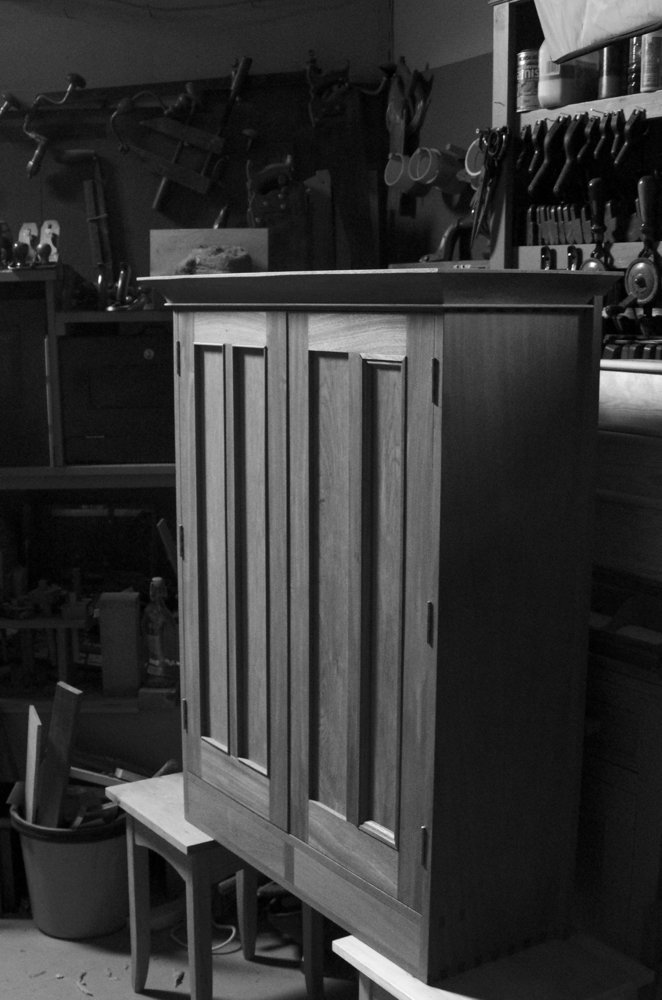
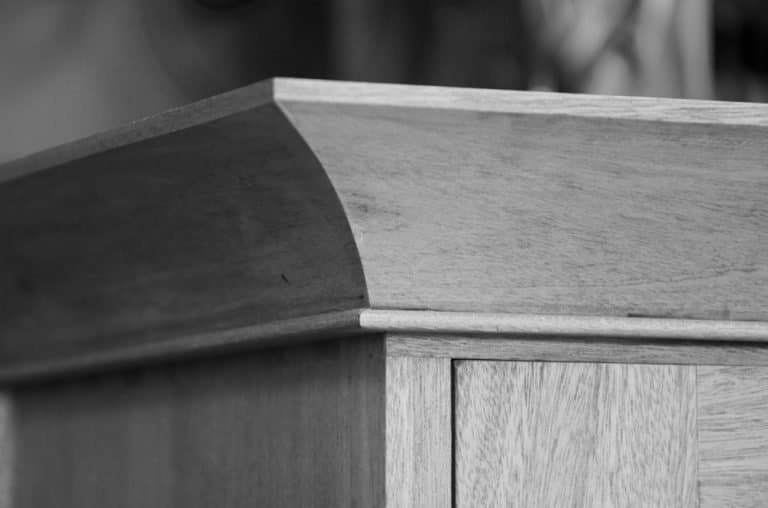
Creating the profiled coving in a hard and dense-grained hardwood like sapele is more problematic than say oak, or walnut, cherry and maple, simply because the grain direction alternates every half inch but it looks so beautiful. In a darker time of my life I would do these things with spindle moulders (shapers USA) using powerful power feeders compelling the wood through the cutterhead at so many feet per second. The wood came out the other side utterly soulless. On small-scale projects I once used the tablesaw method most woodworkers use and that was soulless too. No skilled work in either machine method at all you see. It was boring and took no muscle, sinew or real mental energy. Since those days I have done it by hand and feel the fulfilment and contentedness I need. I also get good and productive exercise too.

We have made planes for different aspects of the work we do on woodworkingmasterclasses (WWMC) and Joseph and I made different round-both-ways planes for instrument making a decade ago to make cellos and violins. We made one in WWMC to make the workbench/bar seats a few years back that has proven amazing, just amazing. I have made these planes from pine two by fours and from old beech taken from wooden and defunct planes. Anyway, I think this plane will remain my favourite during the coming years.
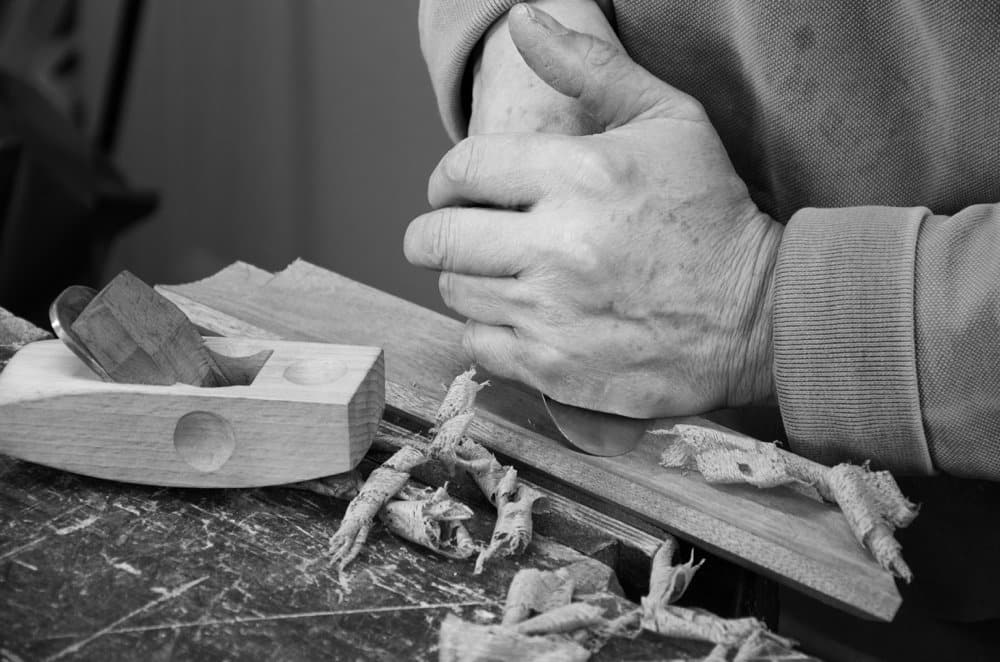
I pulled out my planes for making the coving and I sweat with the exercise of it. The coving was as even as the work I got with machines but so much smoother. I used to hate using my hand tools to refine the machine-made components. 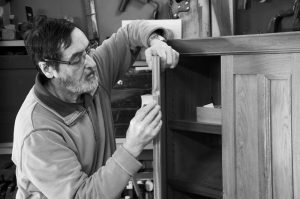
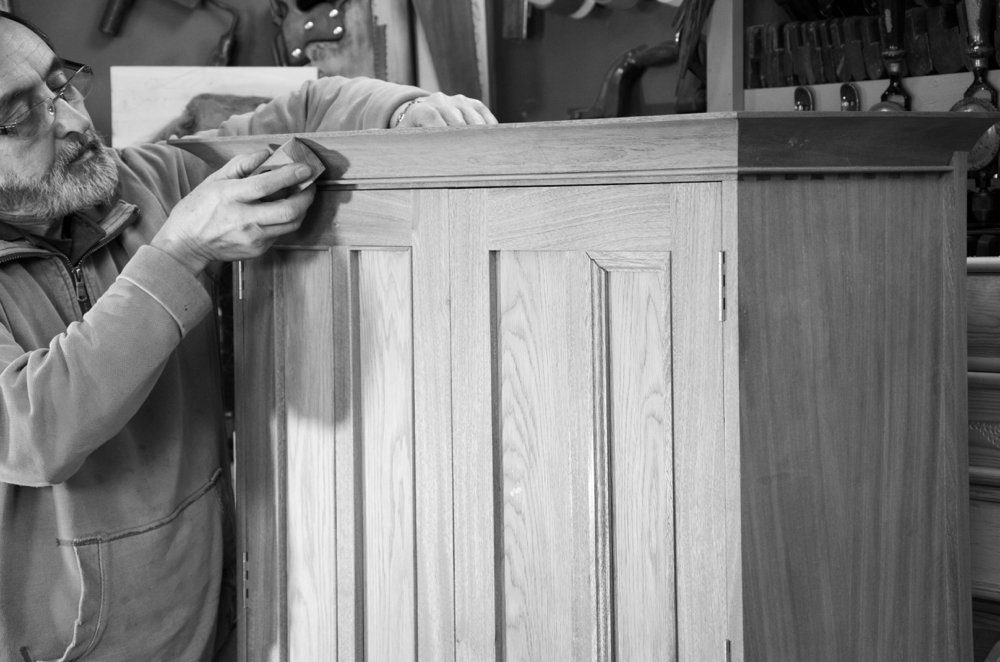
What pleases me all the more is discovering thousand upon thousands now that feel just the same way.


For me it’s a wonderful education. It is more than working wood.
Dear Paul, will you be showing how you make the coves the mouldings on your Masterclass lessons? I’d love to see them being crafted and fitted and learn how to do it.
Wishing you a very happy Christmas and new year.
All the best, Jim.
Yes, indeed we will. It is all in there. This is one of the biggest series we have ever done and it has all the elements of cabinet making as in real cabinets for real woodworking.
I think this is my favorite series yet, Paul. The coving and cock beading are wonderful, and even more wonderful to learn how to do such great work by hand. You’ve outdone yourself.
Paul , I would like to ask a question about the drawing process If I may. I noticed in the opening video for this project you used a Notebook or a sketchpad with the wire binder.
You also attached two sticks together to make a straightedge with one perpendicular to the other. I think from what I gathered at this particular phase is just an Artistic drawing so you can visualize the project and to get the rough dimensions. Is that right?
What size are your Journal sketchpads?
Do you make another drawing scaling down the project in order to work out all the details and parts sizes ect .?
If so do you use the same sketchbook ? Do you use an Architect scale ruler or an Engineer’s Rule.
And If so Which scale dimensions do you like using the best.
I ordered me a couple different sizes of sketchpads to start a journal.
All of my Plans in the past have been scaled down in both Plain View and Isometric drawings
So I’m trying to see if there is another way to achieve my goals here but not be as time consuming.
With the wire binder on the sketchpads I have found for me that it’s almost impossible. But maybe I’m doing something wrong……. If I could have seen inside your Journal a little more then maybe I could have figured it out and not had to ask you all the questions.
Im drawing my tool Cabinet as we speak so That’s the reason for all the questions.
Im very curious which types of drawing are you doing?
Thank you once again for your time.
Chris
Hi I understand you have a new book coming out soon, when will it be forsake
Regards Allan
My entire career dealt with computers and data analysis. Now, I’ve retired, and spend most of my time working wood by hand. Do we become Luddites as we age, forsaking technology for depth and meaning in our endeavors?
Good question to ask. As a graphic designer I spend most of my life changing small amounts of energy on a hard drive, hitting save and then I go home. I often think about that reality and it seems strange. When I’m working with my hands and physically designing something it’s a different experience altogether.
Paul,
you continue to amaze me….thank you so much for what you are doing and please keep it up. I am a novice with no proper shop — I work outside, but I will soon be a paying member and deal with whatever the weather thows at me!
Paul, what an amazing account, using hand made and properly tempered tools to create such beautiful work. How I wish I could go to the awesome nation of England and apprentice under the grate master Paul Sellers. Thank you for all you do.
It has nothing to do with England, John. Most likely you will find more crafting artisans struggling along just fine in the USA than here. The world is in the same malaise I am sorry to say and the USA may have just a little more going for it in its care about craft artisans no matter the craft. At least my feeling always was that people there seem to want to connect with and support one another with an alternative lifestyle like woodworking. Skills were easier to develop and there was space to build what you wanted if you were willing to live out of the bigger cities and find a country spot.
Paul
Is it more that America being a newer country is closer to its roots when the pioneers had to build most things from raw materials. Plus you have communities like the Amish who are slower to take on newer technologies. Plus the raw material being more plentiful is cheaper, the UKs biggest problem IMHO. However, there does appear to be a growing development of woodland craft here, albeit slowly.
I am going to disagree with you on programming. In both cases you start with an idea, this develops into an artifact using your skill and knowledge.
I just think that the US is generally more open to craft work and want to support people that strive for an alternative lifestyle. Brits seem to me to compare handwork to IKEA prices and quality and baulk at paying more. Brits also pay 20% taxes on everything they buy, expect six weeks to two months holiday a year and like to work unrealistic hours in a week like 38 hours. That seems too silly to me, but if I was a software programmer perhaps it would seem necessary because of the boredom. levels.
Not sure what’s meant by the last para, Keith. Oh, and Americans work harder too.
Paul
Programming comment was in ref. to “I don’t think I could feel clever programming a computer to make the machines make what I want to make”. Whilst I do agree with you that making objects by hand does give an additional satisfaction from the tired muscle created along the way, but many don’t. But both processes are creative. When I did such things I had a habit of often getting up to work on a problem.
I do believe that too many young (and not so young) seem to believe that they are entitled to (financial) rewards without putting in any effort. Equally I see brits who are working their socks off to make ends meet. My concern is that I don’t see many young people who want to earn a living making things, in its very broadest sense.
Gotcha! Here’s the thing. Most machine work becomes a production line. That production line can and mostly does become a miniaturised production line. That’s when the enjoyment ends for most people at some level and at some point. Not always but very often. This too applies to technology when programmers become part of the mechanism and end up programming in less inventive realms. You have those skilled in their sphere of development who have interesting things to invent and develop but then you have people who don’t but can be trained to programme in a similar way that companies dumbed down the need for skilled thinking work and end up assembling. This is the extension of the Industrial Revolution we all know and love Britain for birthing. Brits work hard in some realms because competition is cheaper from other continents these days. If they don’t work hard the book gets printed elsewhere. We have a new book coming out that is being printed with a printer here in the UK. It costs twice markedly more as say printing in Singapore or China, but we support UK businesses wherever we feel they are ethical. It is a hard lesson for young people when they are told constantly that to get a good job is to work hard , have higher education and make as much money as you can and that is how you will measure your success. That you can be whatever you want to be. I was always contented with my work and found fulfilment in my work. I was raised with the ethic that honest hard work was a good thing to have. It turned out that my dad was right.
Hi Paul I must comment on how inspiring I find your master classes. I to was once lost in machines and power tools, but now truly appreciate the skills and sense of achievement you are gifting us all fortunate enough to follow your path. I can’t wait to get stuck into the cabinet project I only hope I can step up to the mark with my hand skills.
Merry Christmas and a prosperous new year to all.
Paul, thanks for this post. I’ve been asking this question for years and never received a satisfactory reply from anyone until you presented this.
Thank you!
Paul- You said a surprise was coming in this project and, indeed, there was! Thank you very much for including mouldings in this project. It is very much appreciated. -Ed
Paul, I was hoping you would explain why that (nice) little plane was rounded in both ways. I inherited an ancient plane from my grandparents with the same rounding both ways, but bigger than the one you made. I haven’t been able to figure out what this plane was used for and this is the first time i’ve seen one in action, so I’m hoping you could help me with some insight. I’m thinking if it was made for making coves it would surely be rounded only across the sole of the plane, while it would be flat along the length of the plane?
You are correct that in this instance the double curve is not necessary. designed to plane a dish type shape, eg to plane the dished area on the seat of a chair. A travisher is also used for this as well.
I am putting a blog together on this to help understand why this can be better than a straight hollow.
Thank you Keith. I was thinking it might have been used to refine the inner curves of dough troughs (which were common here in Scandinavia), but I’m sure a travisher would be more versatile. Still, it’s good to see that it can be put to good use for other purposes too!
What happened to color pictures? I understand going back to basics with hand tools, but b&w pictures is too much. Please explain. thanks larry
Not sure why such strong opposition. Black and white takes out excesses caused by colour and gives deeper tone and texture. I have done blogs in B&W for those like me who prefer it and then mostly colour to provide a balance for those who have never known B&W. Simple really.
Just as with hand tools, it’s not going back to basics in any way at all but the more advanced way only skilled work can.